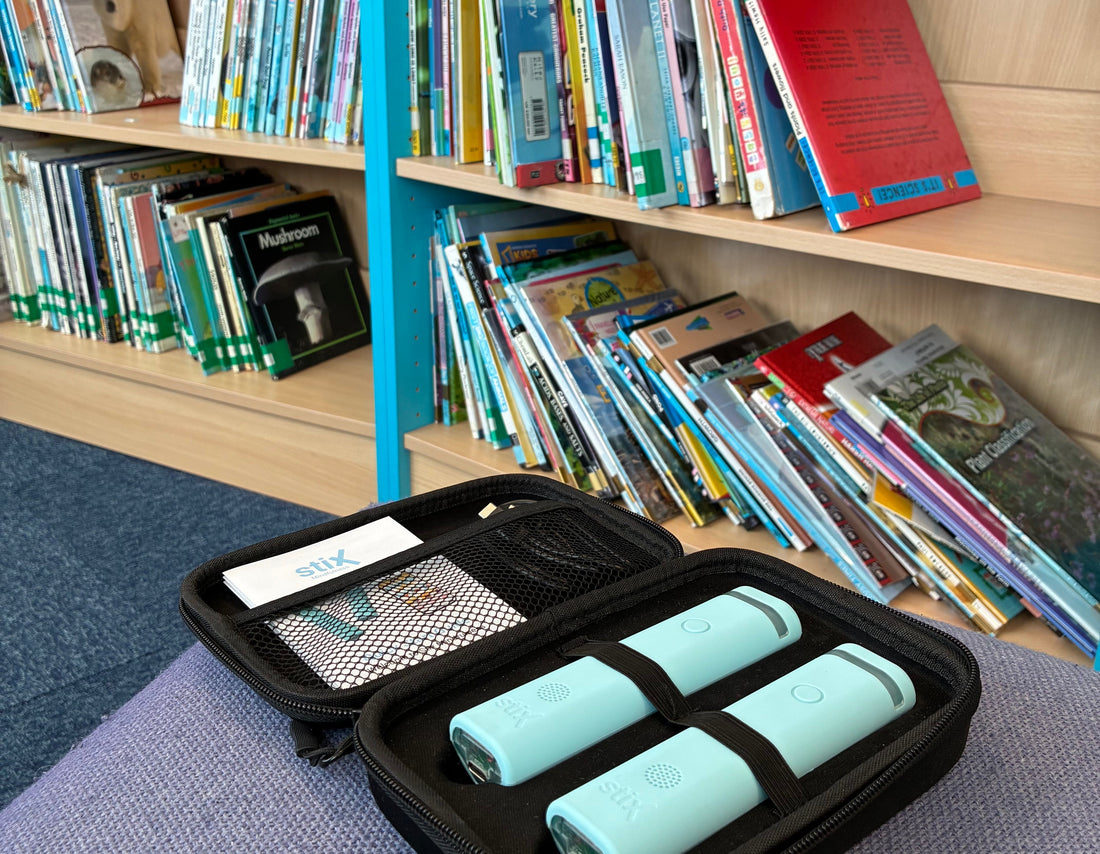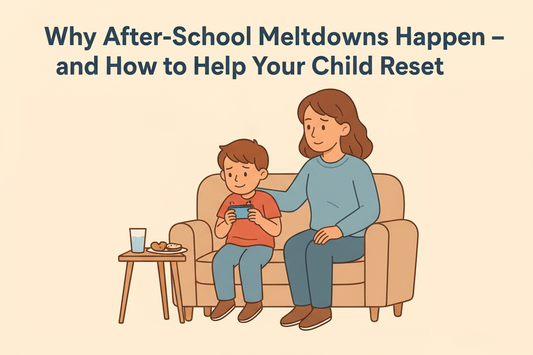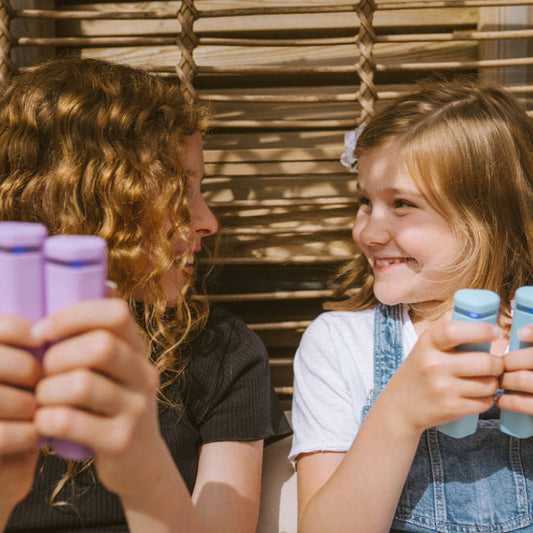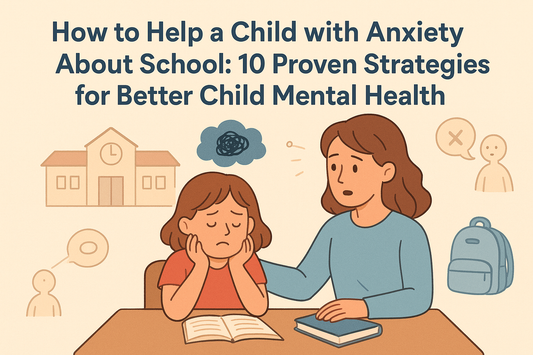Supporting Children with ADHD, Autism or Sensory Needs Through Mindfulness

Raising a neurodivergent child can feel like stepping into unfamiliar territory. Whether your child has recently been diagnosed with ADHD or autism, or you're starting to notice signs of sensory challenges, it's normal to feel unsure about where to begin. There’s often a flood of information and advice, and it can be hard to know what will actually help.
Mindfulness offers something simple and powerful. It gives children space to pause, breathe, and feel more connected to themselves. It isn't about teaching stillness or silence. It's about helping children feel safe in their own bodies and emotions.
At Stix, we've seen how mindfulness can transform daily life for neurodivergent children when it's delivered in the right way. In this article, we'll explore how mindfulness supports children with ADHD, autism, and sensory needs, and how parents can introduce it in ways that are fun, accessible and actually work.
Understanding ADHD, Autism and Sensory Needs in Children
Children with ADHD or autism often experience the world more intensely than their peers. Sounds might seem louder. Transitions can feel overwhelming. Big emotions can appear suddenly and be hard to manage. These responses aren’t signs of bad behaviour. They're often the result of a nervous system working overtime.
ADHD can affect attention, impulse control and energy levels. A child might struggle to focus, find it difficult to stay seated, or jump from one activity to the next without pause. Autism can affect how a child communicates, processes information, and responds to sensory input. Many autistic children experience sensitivities to noise, touch, texture or light, which can make everyday situations feel uncomfortable or even distressing.
When a child is navigating the world with these challenges, they need more than just strategies to cope. They need tools that help them feel calm, capable and understood. That’s where mindfulness can become a valuable support.
The Power of Mindfulness in Neurodiverse Children

Mindfulness is often misunderstood as something passive — sitting cross-legged in silence or focusing on your breath for long periods. But for children, especially those with ADHD, autism or sensory needs, mindfulness can look very different.
At its heart, mindfulness is about paying attention to the present moment. It helps children notice what they’re feeling, sense what’s happening in their body, and respond with greater awareness rather than being swept away by frustration, anxiety or overwhelm.
For neurodivergent children, this can be a game-changer.
Mindfulness supports the nervous system. It helps lower stress, regulate breathing and reduce the fight-or-flight response that is often triggered by sensory overload or emotional dysregulation. Over time, mindfulness builds pathways in the brain that support focus, emotional control and resilience — skills many children with ADHD or autism find difficult to develop through traditional approaches alone.
Importantly, mindfulness doesn’t have to mean stillness. For some children, mindful movement, sound, or tactile play can be just as effective. The key is to make mindfulness accessible, engaging and suited to each child’s unique needs.
The Benefits of Mindfulness for your children
When introduced consistently and in the right way, mindfulness can have a meaningful impact on a child’s wellbeing. For children with ADHD, autism or sensory sensitivities, some of the most common benefits include:
• Emotional regulation
Mindfulness helps children become more aware of their emotions and gives them tools to manage strong feelings before they boil over.
• Improved focus
By practising attention in short, manageable bursts, children can gradually strengthen their ability to concentrate and stay with a task for longer.
• Better sleep
Mindful breathing or body awareness exercises can support more restful sleep, especially when used as part of a calming bedtime routine.
• Sensory self-awareness
Children begin to notice what sensations help them feel grounded and which ones are triggering. This builds their ability to communicate and advocate for their own needs.
• Increased confidence
When children experience that they can manage big feelings or moments of overwhelm, it builds a deep sense of self-trust.
Stix as a solution

For many parents, the challenge isn’t knowing that mindfulness could help — it’s figuring out how to get their child to actually engage with it.
That’s exactly why we created Stix.
Stix is a playful, screen-free mindfulness tool designed specifically for children with ADHD, autism or sensory needs. Using light-up handheld remotes, guided audio and tactile interaction, it brings mindfulness to life in a way that feels exciting, not like a chore.
Each Stix activity is short, sensory-friendly and focused on helping children practise calming techniques through movement, stillness and breath. The remotes light up to encourage focus and guide participation, helping children stay engaged while giving them something physical to hold and respond to.
Whether your child is bouncing with energy or needs help winding down at the end of the day, Stix meets them where they are. It’s not about forcing stillness or pushing one-size-fits-all methods — it’s about giving your child the tools to feel safe, calm and confident in their own body and mind.
Real Stories: How Stix has helped my Autistic son
One pupil recently told Stix:
“When I get into class in the morning, the first thing I do is take a moment with my Stix mindfulness tools. I can use them before school starts or anytime I need a reset. They help me feel calm, focused, and ready for learning - especially if the night before was tricky. After using Stix, I go straight to my laptop, which also helps settle me into the day. Just sitting down, taking a few breaths, and focusing on my Stix gives me a good start and helps my mind feel clear.”
A teacher trialling Stix in her classroom said, “It’s the first time some of our children with sensory difficulties have been able to join in a mindfulness session from start to finish. The lights, the voice, the physical movement, it just clicks with them.”
We’ve also heard from parents of autistic children who’ve struggled with emotional outbursts. After a few weeks of using Stix, they noticed their child beginning to ask for it when they felt upset, recognising that it helped them feel better. That kind of self-awareness is incredibly powerful.
The stories keep coming in, and they remind us that mindfulness, when made fun and accessible, really can fit into family life, even for kids who usually struggle with these kinds of tools.



